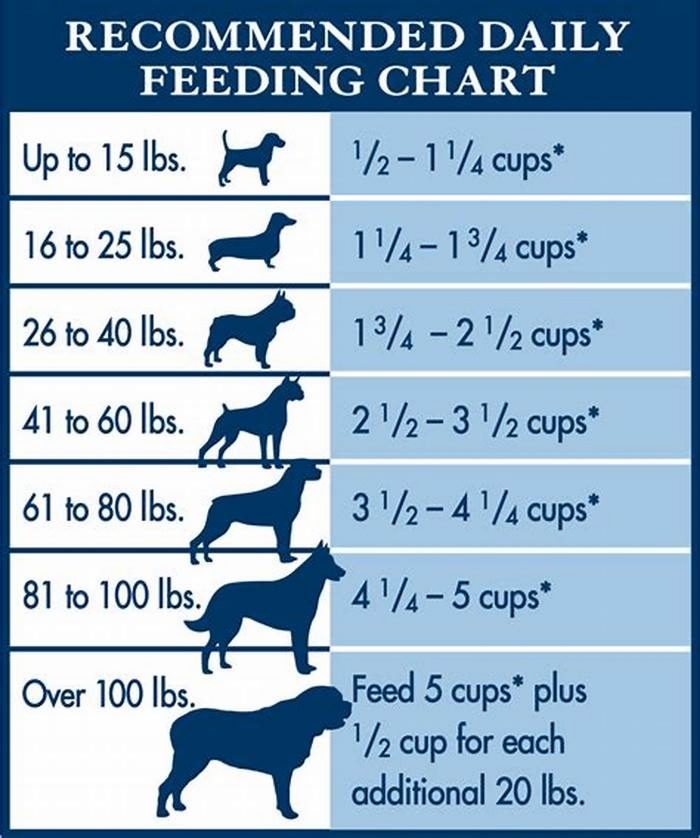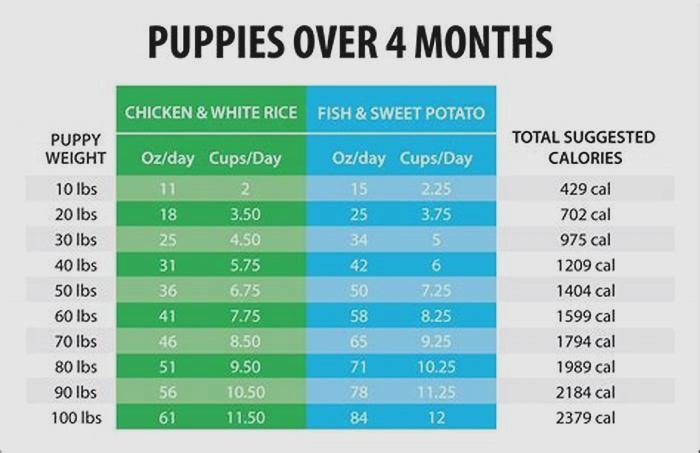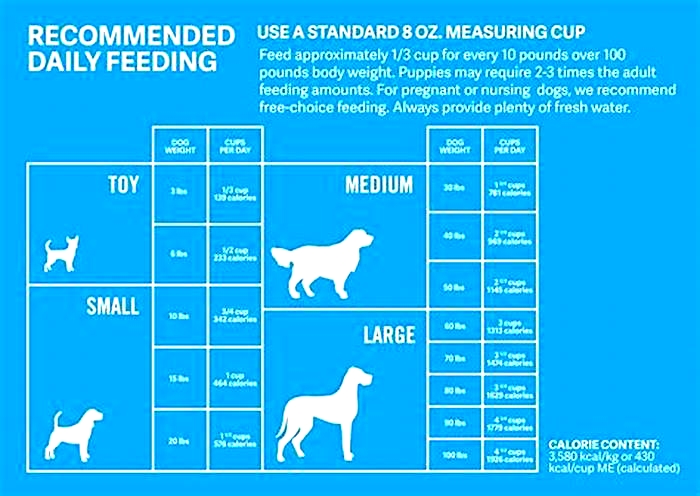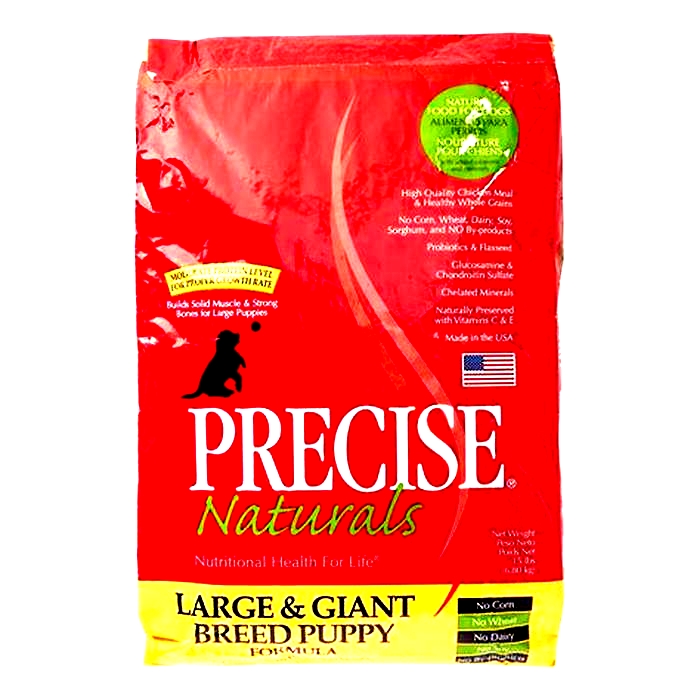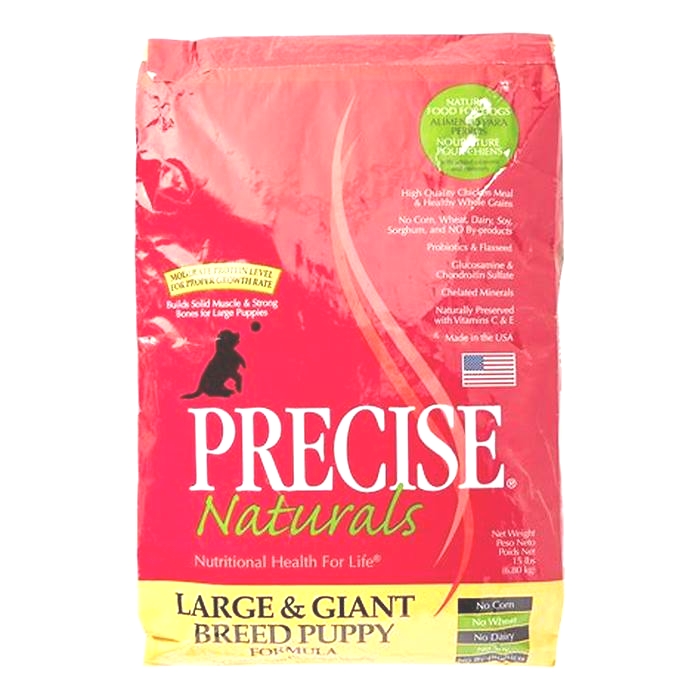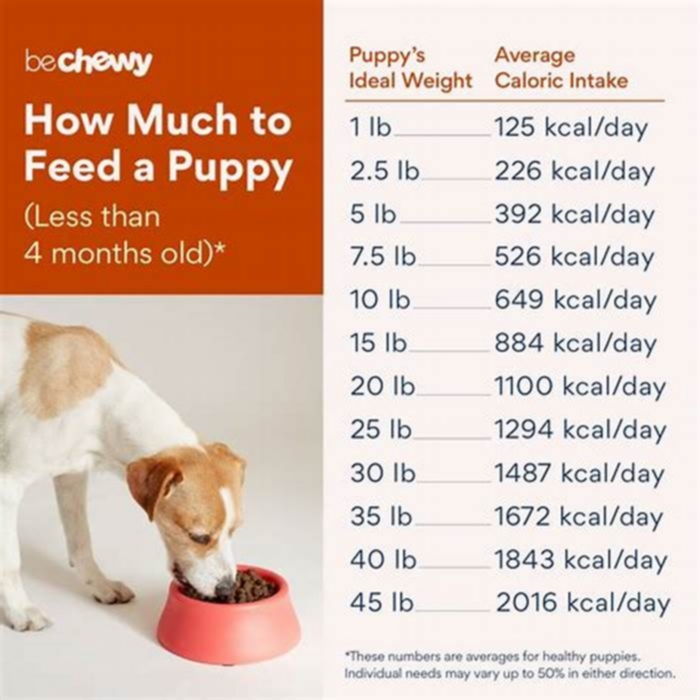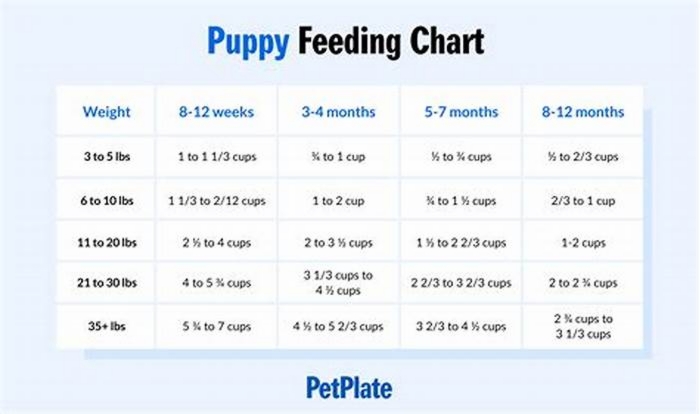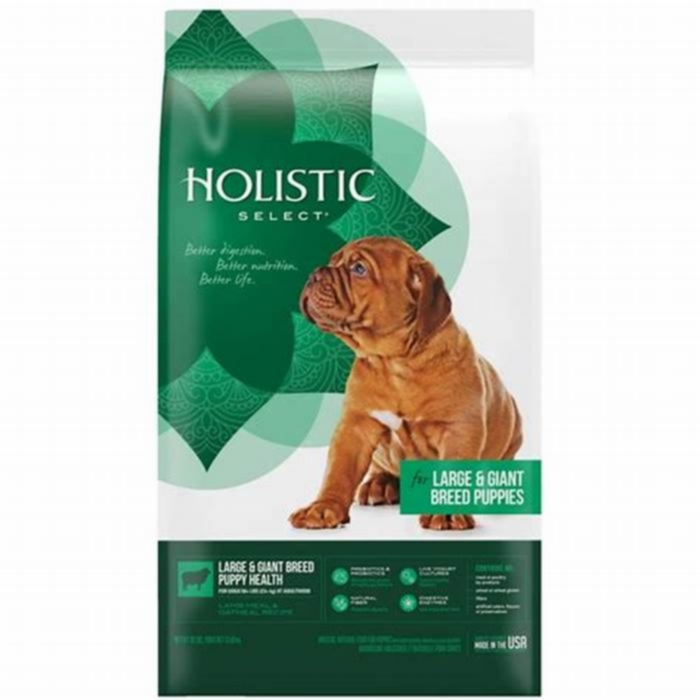What s the difference between regular puppy food and large breed puppy food
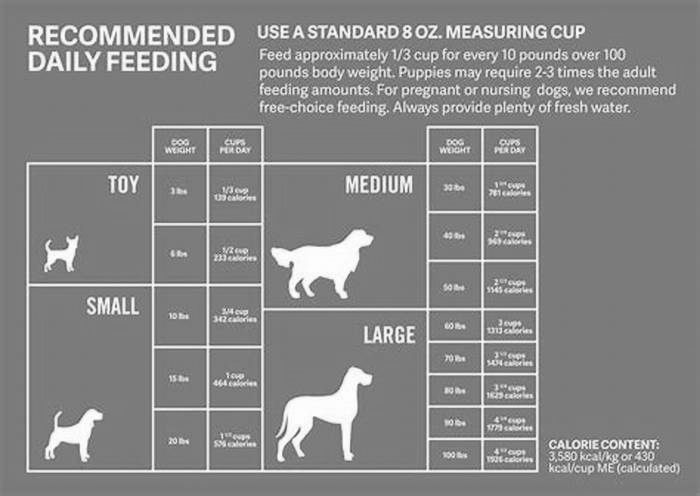
Whats the difference between puppy and adult dog food?
Puppies wont get enough protein if theyre eating adult food, so its critical they eat a puppy specific formulation. Most brands carry products clearly marked as being puppy food.
Additionally, puppy food helps puppies grow at an appropriate rate. Vets make a distinction between optimal growth rates and maximal growth rates.
An optimal growth rate in puppies is ideal, write veterinarians Krista Williams and Robin Downing for VCA Hospitals. It is a slow and steady growth rate that allows the puppy to achieve an ideal (optimal) adult body condition while avoiding excessive weight and obesity.
Williams and Downing define a maximal growth rate as growing a puppy as fast as possible via high fat foods or overfeeding. Maximal growth rates can increase the risk of skeletal deformities, obesity later in life, and a shorter lifespan. Dog obesity is linked to hypertension, heart disease, diabetes, osteoarthritis, heat intolerance and decreased immune function.
You want your puppy to grow at a speed thats just right.
Oftentimes, puppy food is formulated at a higher caloric density per serving. Puppies have small tummies and can only eat so much in one sitting, which is why they need more calories per bite. You will probably need to feed your puppy around four times per day.
There is one grey area when it comes to buying puppy specific food. Some dog food brands carry dog food for all stages of life. This food may meet the nutritional requirements puppies have read the labels to determine the amount of crude protein (22 percent) and fat (eight percent) is in each serving.
Why is protein so critical?
Protein has several roles in the body, such as building and repairing muscles and other body tissues, according to PetMD. It is also needed to form new skin cells, grow hair, build muscle tissue and more.
A PetMD article titled The Power of Protein, notes that dogs cant store up protein in their bodies and they depend on eating it via their daily diet. Its important that a puppy gets enough protein so it can grow.
Because amino acids are basically the building blocks of tissues, protein has several functions in a dogs body, according to How Stuff Works. Its the structural component of connective tissues, as well as hair, skin and nails. But its also essential for the immune and musculoskeletal systems.
Animal protein, which contains 10 essential amino acids, helps ensure your puppy has a glossy coat and healthy skin. Dry or brittle fur suggests that your dog may need more protein, at any age.
Some proteins are better than others look for specific animal proteins (turkey, or beef, or lamb, or fish) listed in your puppy food ingredients, rather than animal byproduct or meat meal. Knowing exactly what type of protein your puppy is eating will help you discern if your new puppy has any food sensitivities. Protein should also be at the top of the ingredient list, rather than grains, vegetables or fillers. Dogs arent strictly omnivores veggies, fruit, and grains or other carbs provide nutrients for your puppy, but protein comes first.
Puppies need to eat more in the way of protein (including higher concentrations of specific amino acids), fat, and certain minerals than do adult dogs, according to PetMD. Many manufacturers provide higher amounts of nutrients that are not regulated by AAFCO in their puppy foods. Good examples are the omega-3 fatty acids that have been shown to promote healthy brain and eye development in young animals.
How to Find the Best Puppy Food for Your Dog
There's nothing you want more than to keep your puppy healthy during the important formative months of his energetic life. But to set the stage for a long, happy adulthood, it's important to choose the best puppy food for his development. You want nutritious meals that are specially formulated for young dogs. And if you consider what you're feeding your dog now, you can avoid health issues like obesity, weak muscle and bone development, or poor immune response in the future.
Here's what to keep in mind as you search for the right product for your pup.
Research
The best puppy food is committed to high-quality ingredients formulated with a precise balance of nutrients that meet the needs of a growing pup. And the food brand you choose should care what goes into your dog's food at this critical early stage of development. Look for puppy food products created by experts like veterinarians, PhD nutritionists, and/or food scientists to help create puppy food that's nutritionally balanced so that your beloved dog lives a long and healthy life. The nutritional information on each puppy food label should always be the next step in your search.
Ingredients and Nutrition
Puppies require food that provides them with all the nutrients that growing puppies need, including calcium and protein. Puppy food with the right amount of calcium helps controlbonecontrol bone growth, ensuring his bones, muscles, and joints develop properly into adulthood. Protein also helps with strong growth in the development of lean muscle, so look for foods with proteins like chicken, lamb, salmon, corn, wheat or barley on the label to ensure he's getting what he needs. You'll often see Vitamins C and E on puppy food labels, as well, which help build a strong immune system, while fiber sources like flaxseed and whole grain and folic acid help him digest these important nutrients.
Size Matters

Maybe you brought home a dachshund puppy, whose tiny legs are only as long as your pinky finger. Or, perhaps you chose a golden retriever pup whose large (and sometimes clumsy) paws are an indication of the girth to come. Clearly the size of your dog needs your consideration when making a food choice. That's why most puppy foods, including Hill's Science Diet, have different options for large and smallbreeds. Not only do these foods meet the needs of each mouth, but are formulated to ensure proper bone growth, muscle mass, and energy output according to the size of your dog.
Feeding time
You might be tempted to leave food out for your growing and high-energy dog so that he can eat whenever he wants. But don't. Doing that can lead to bad habits, like overeating, and accompanying health problems like obesity and bone development. As a general rule, a young puppy should be fed three times a day to keep up with his high-energy lifestyle. By the time your dog reaches six months of age, you can reduce the number of times a day you feed your dog to two.
What to Avoid
Although some unwelcome ingredients might give your dog a stomach ache, other ingredients can be downright dangerous for your pup. Avoid giving your new puppy table scrap; foods that are part of your own everyday snacks and meals, like onions and grapes, and foods that contain xylitol, an artificial sweetener, can be dangerous to him. If you have any questions about what to feed your pup, ask your veterinarian for advice. You love your sweet puppy dog, and he knows it. After all, you prove it every time you play with him, shower him with affection, and feed him the high-quality kibbles that will help keep him become healthy now and stay fit in the years ahead.
Talk to Your Veterinarian
When youre trying to decide on the best food for your pup, its easy to get overwhelmed by the number of options you see on your shelves. While this article should give you some tools to help make the decision process easier, remember that your veterinarian is a reliable and trustworthy source of information on the food options available for your pet. Your puppys first appointment with their vet is a great opportunity to start a discussion about nutrition and get your pup on the right track from day one.
Contributor Bio

Kara Murphy
Kara Murphy is a freelance writer in Erie, Pa.
Small Breed Dog Food vs Regular vs Large Breed: Main Differences, Pros & Cons
Each dog needs something different from its food, and it isnt just about its size but also its age and breed. These dietary needs go beyond how much kibble you put into the bowl.
It sounds complicated, especially when you walk into a store and see a wall of dog food promising you the best nutrition a dog can get. When searching for the best food, you should select a high-quality recipe and ensure you use the correct amount according to your dogs size. Too much dog food can lead to obesity, and too little can result in malnutrition, which can cause expensive health problems in the future.
When it comes to nutrition, you dont want to get it wrong. Weve collected everything youll need to make an informed decision, whether your dog is small, medium, or large.

At a Glance
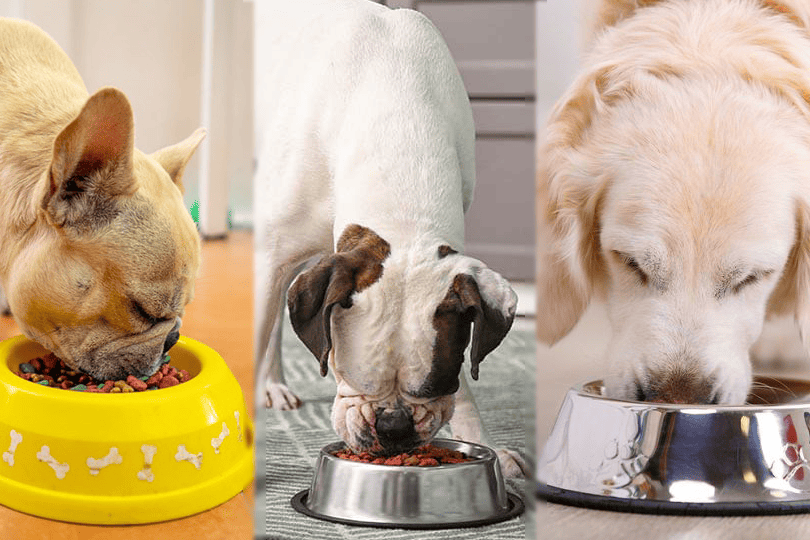
Lets look at the critical aspects of each product.
Small Dog Food
- Perfect kibble size
- Health benefits
- Health risks for other breeds
Regular Dog Food
- Perfect for mid-size breeds
- Health benefits
- Health risks for other breeds
Large Dog Food
- Nutritionally supportive of rapid growth
- Supports healthy weight
- Health risks for other breeds

Overview of Small Dog Food

Dog food for small dogs increases the calories without increasing the amount of food in their bowls by maintaining a higher fat-to-protein ratio. Kibble sizes are smaller for tiny mouths, and even canned wet food is more finely ground. According to the American Kennel Club, theres a risk of hypoglycemia in smaller breed puppies.
This is because they have low body fat and are very active. Tiny dogs need a rich diet to provide energy, and most large breed meals are not suitable for them. Symptoms to look out for in your pup that may indicate hypoglycemia are weakness, lethargy, muscle tremors, and seizures.
Small breed recipes are unsuitable for larger breeds that need to eat larger quantities of food that is not as nutritionally dense. If a larger canine were to eat food for smaller breeds, they could overeat since they would need more of the smaller kibble to fill up.
Pros
- High-calorie count
- Small kibble sizes
- Nutritionally rich without increasing food intake
Cons
- Too nutritionally dense for larger breeds
- Larger breeds would have to overeat to fill up

Overview of Regular Dog Food
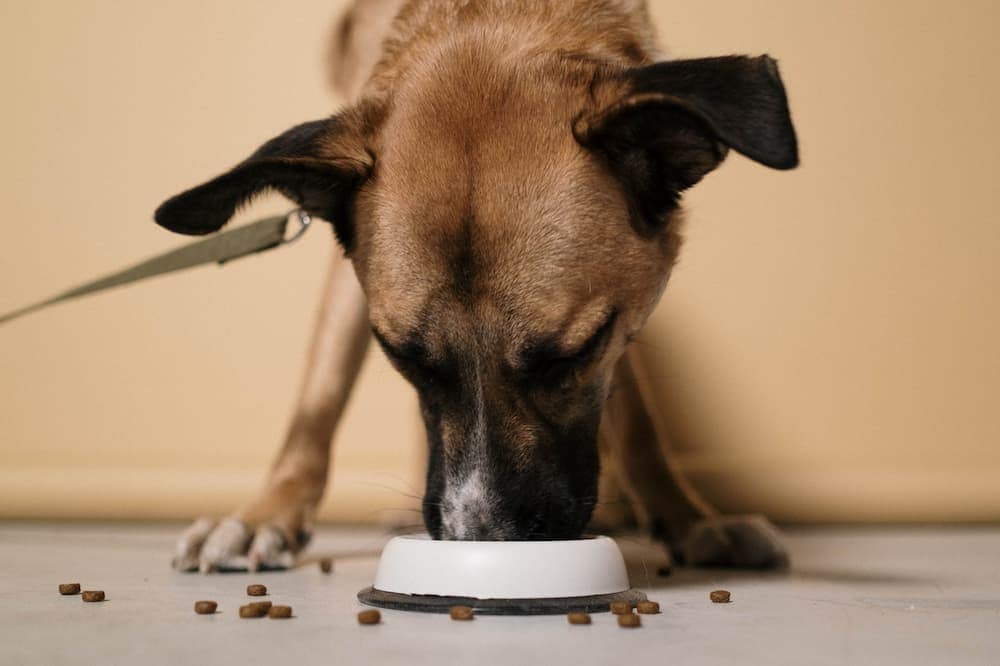
Dog food formulated for medium-sized breeds contains the ideal amount of nutrients and calories for dogs that do not have dietary restrictions. Medium breed dogs are the most common in the U.S., but they sometimes fall into other size brackets. For example, adult dogs between 2050 pounds can be described as mid-size, but a 30-pound difference is a large one.
Some small or large dogs can also fall into the medium category, especially if they are mixed breeds. Beagles and basset hounds would be examples of this scenario, depending on their weight. This means medium-sized dogs would, in a way, have their pick of the menu, depending on their nutritional needs.
For a smaller breed, the kibble size would be too large. You could crush the kibble, making it easier for your smaller breed to eat. However, you would have to put more food in the bowl since regular food is not as nutritionally dense.
The kibble size wouldnt be a problem for a large breed, and they could safely eat regular dog food. However, a bigger dog benefits from the nutritional content of large breed meals that regular food lacks
Pros
- Nutritionally and size perfect for a medium-sized breed
- Depending on weight, some small and large breeds could eat this food
Cons
- Nutritionally deficient for much larger dogs
- Small dog at risk of overeating on this diet

Overview of Large Dog Food

A common misconception about larger breeds is that a bigger body means more food, but this isnt necessarily true. A common problem with larger breeds is overfeeding, and its estimated that obesity can take as much as two years off of your pets life. Bigger dogs grow much faster than smaller breeds, with some weighing over 100 pounds in under a year!
This means that larger breeds have certain risks that you need to consider, which an owner of a smaller dog wont need to.
Recipes for larger breeds have been formulated to keep the dogs at a healthy weight. When contemplating which food to get, go for a high-quality diet with lean proteins, a mix of vegetables, vitamins, and minerals. Improper nutrition can lead to severe health conditions, like low bone development.
Pros
- Supports the nutrition a large breed requires
- Less likely to overeat
- Food formulated to support healthy growth and development
Cons
- Choking hazard to smaller breeds
- Nutritionally unsupportive of a smaller breeds needs
![]()
 What Are the Differences Between Them?
What Are the Differences Between Them?
When picking food for your dog or puppy, you need high-quality recipes, but what does that mean?
How to Read a Dog Food Label
One of the first things youll examine as a conscientious owner is the dog foods nutrition label. While its essential to read, sometimes it can feel pointless because the information isnt always easy to interpret. Here are a few things to look for on the label:
- You want to see complete and balanced
- Life stages (puppy, adult, etc.)
- Check ingredients for anything your dog is allergic to
When it comes to complete and balanced it means the food contains the minimum amount of nutrients, vitamins, and minerals necessary to ensure nutrient efficiency.
If youre ever unsure about the quality of a dog food brand, contact your veterinarian. They will be able to give you an idea if the food is made from quality ingredients such as meats, grains, vegetables, and fruits. You can also contact the manufacturer or visit their website to make an informed decision.

Other questions you will want to ask when visiting the manufacturers website are:
- Do they follow AAFCO feeding trials?
- How many calories are in their servings?
- Where do they source their ingredients?
- Do they manufacture in-house or outsource?
It can be challenging to determine how much you should spend on food, but its wise to stay away from the cheapest option. Expensive products can make you wince, but you get what you pay for with dog food.
However, the most expensive option does not always indicate that it is the best quality either. By talking to your vet, you should be able to find a brand that wont break the bank or sacrifice nutrition.
![]()
 Summary
Summary
Each dog needs something different from its food because they develop in different ways. Choosing the best food for your canine is daunting because the diet plays a vital role in preventative healthcare. Arguably, the best resource you have is your vet. If youre unsure which food to select, we recommend getting professional advice.
Featured Image Credit: Left: Small Dog Eating (Image Credit: Scorpp, Shutterstock) Middle: Regular Dog Eating (Image Credit: Kabo, Unsplash) Right: Large Dog Eating Image Credit: Jaromir Chalabala, Shutterstock

